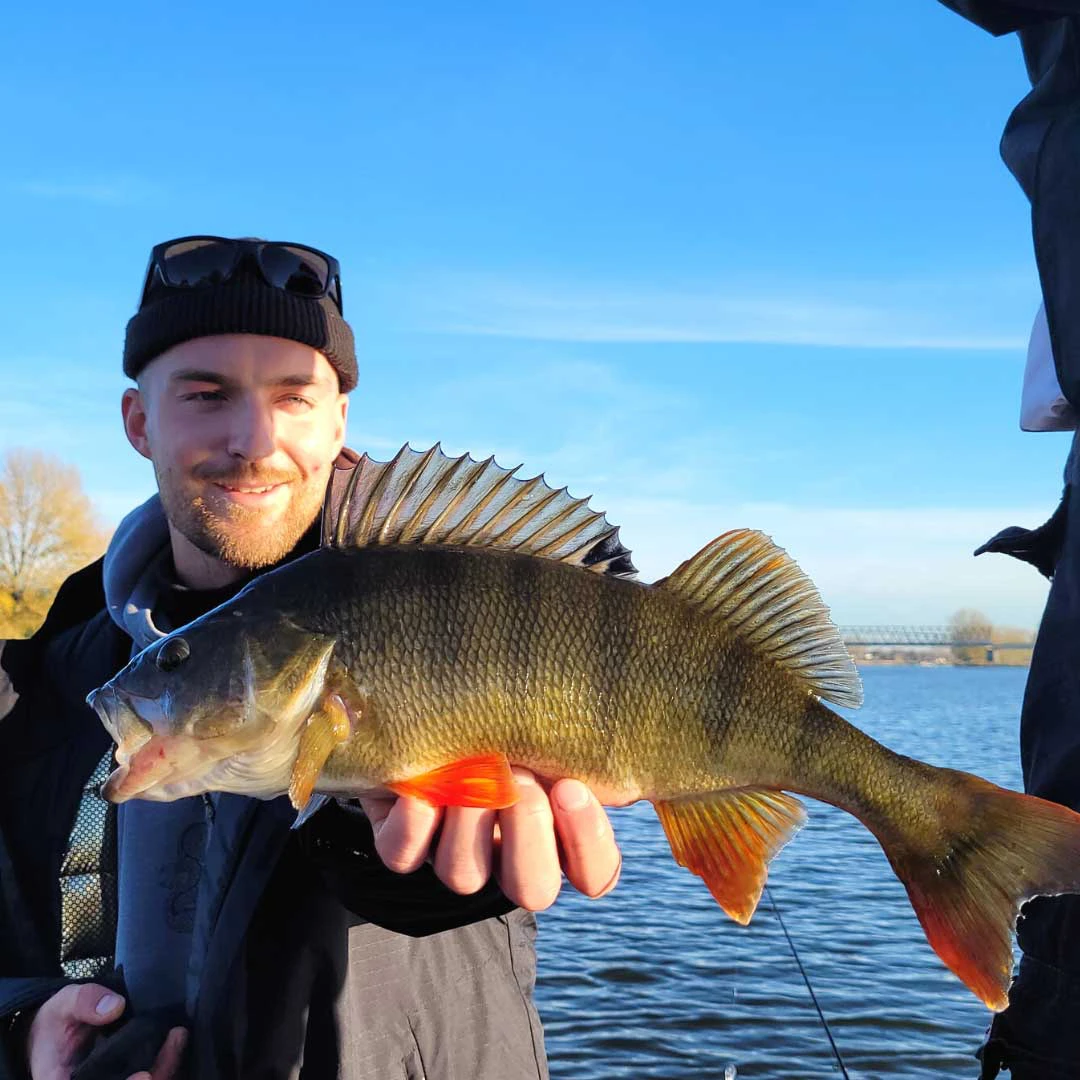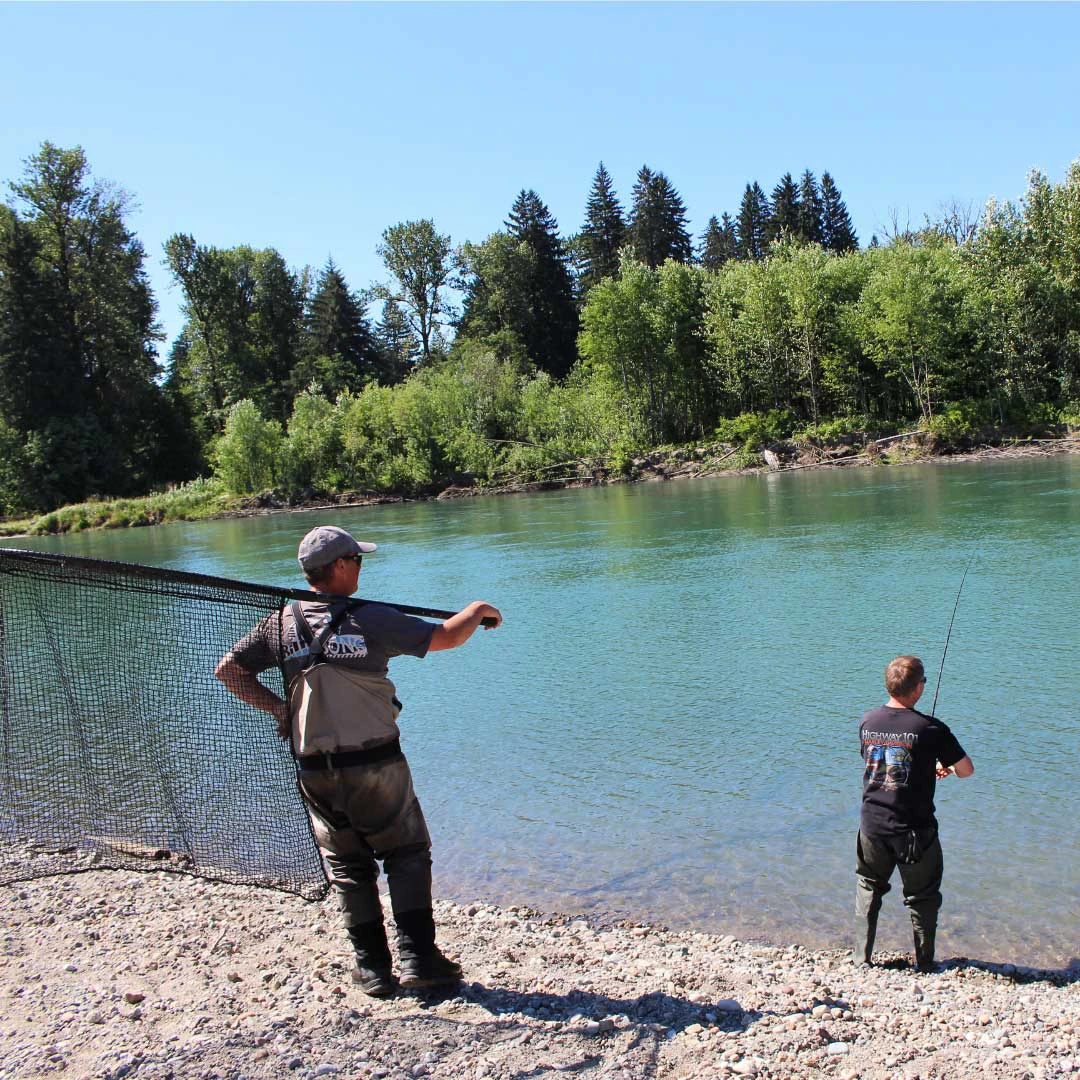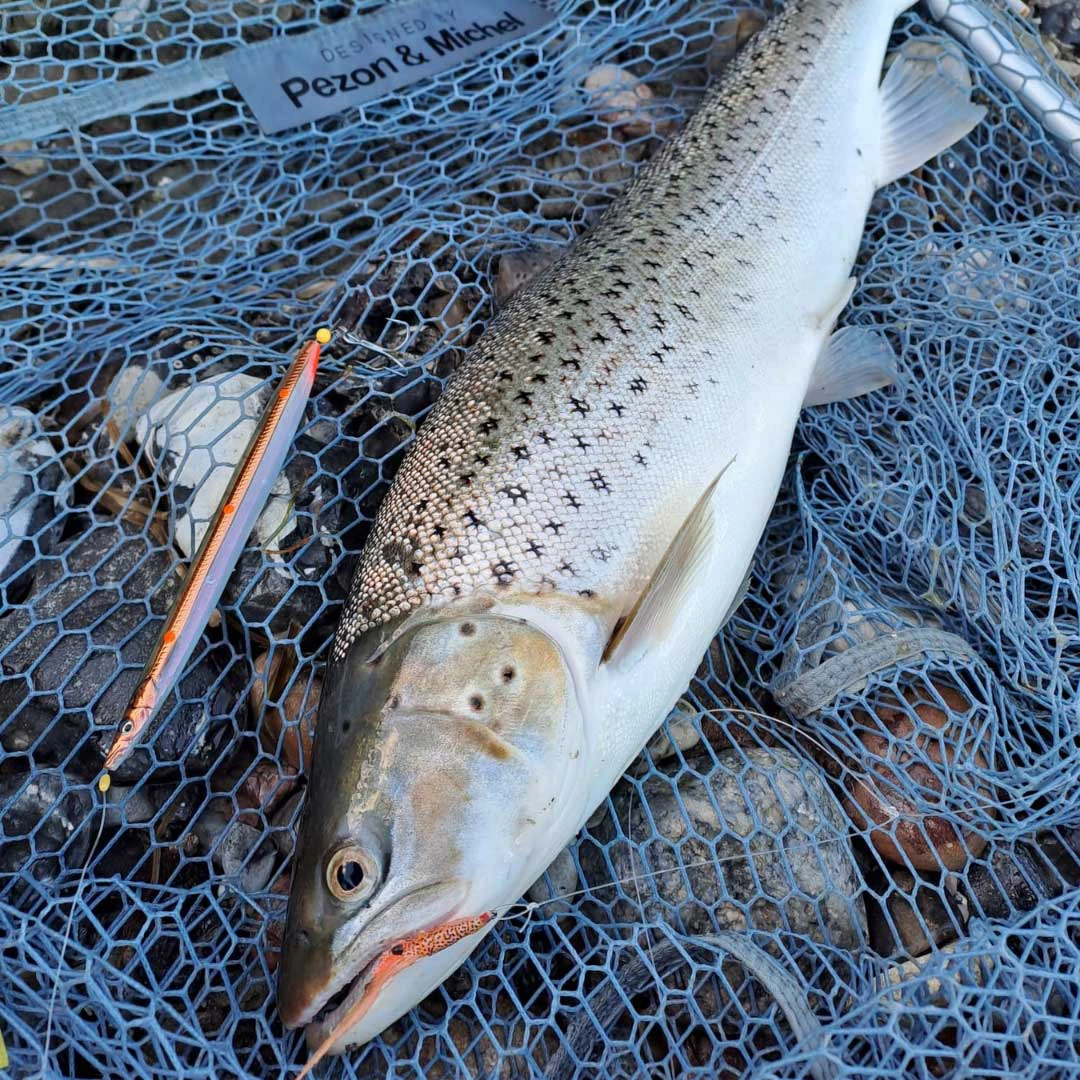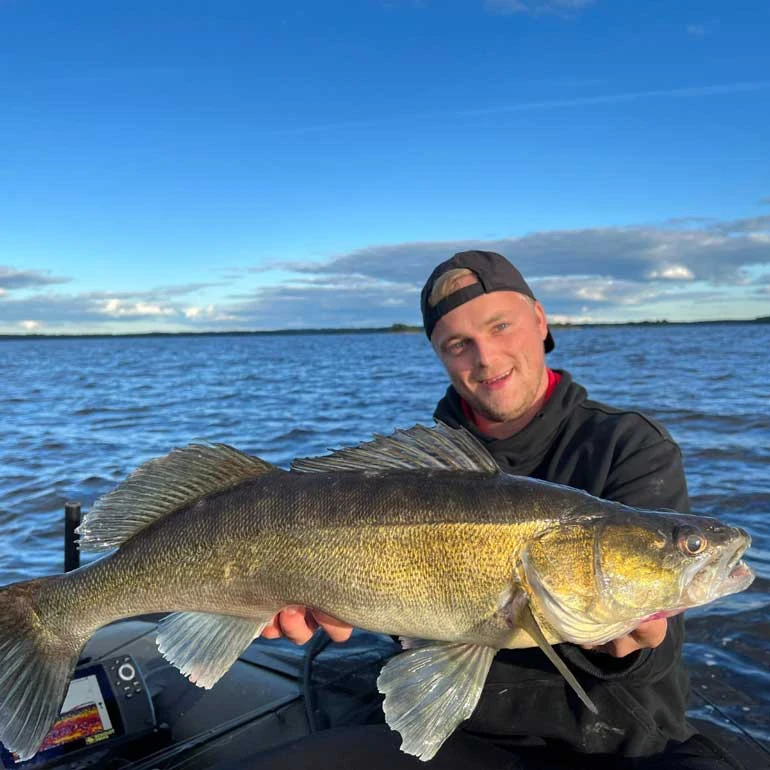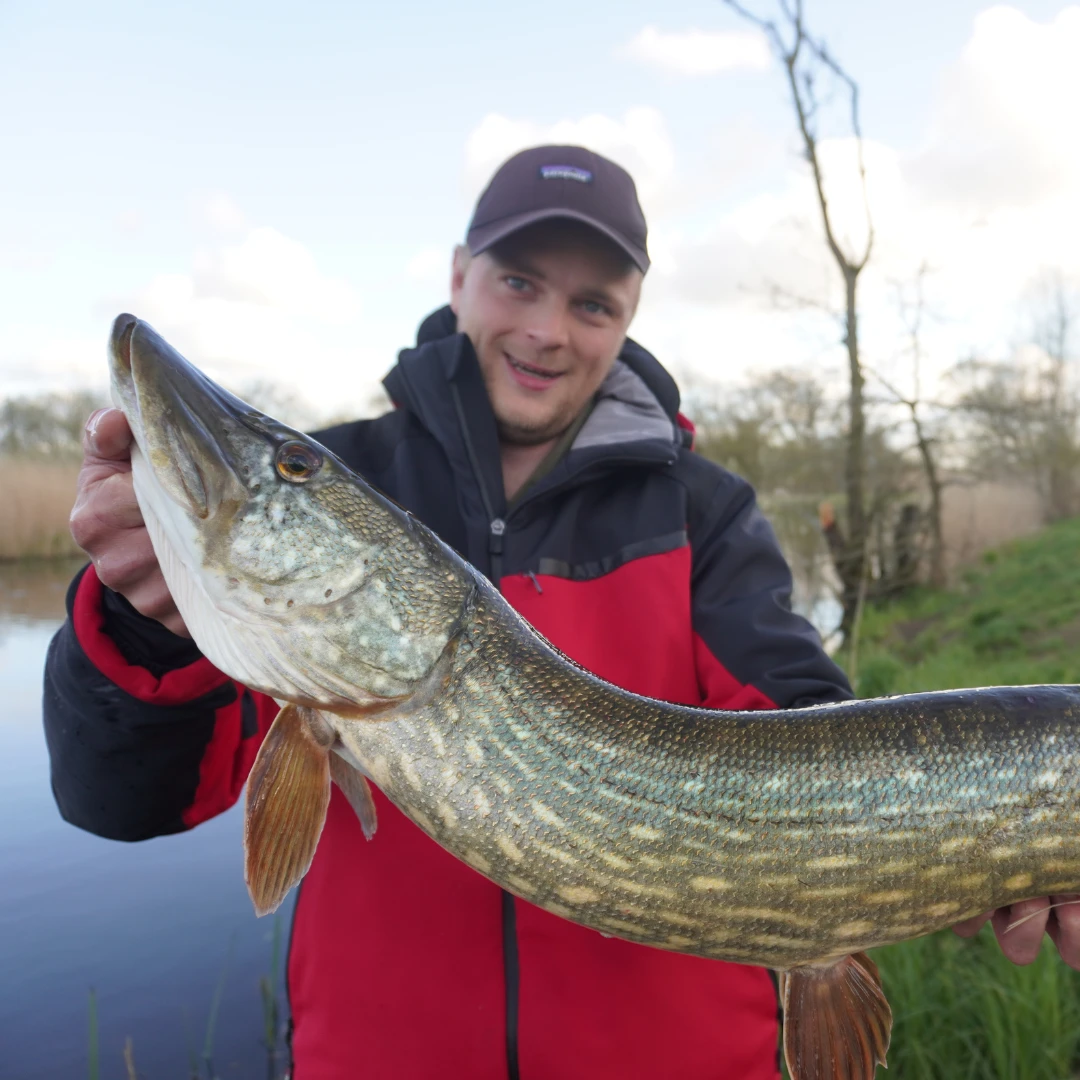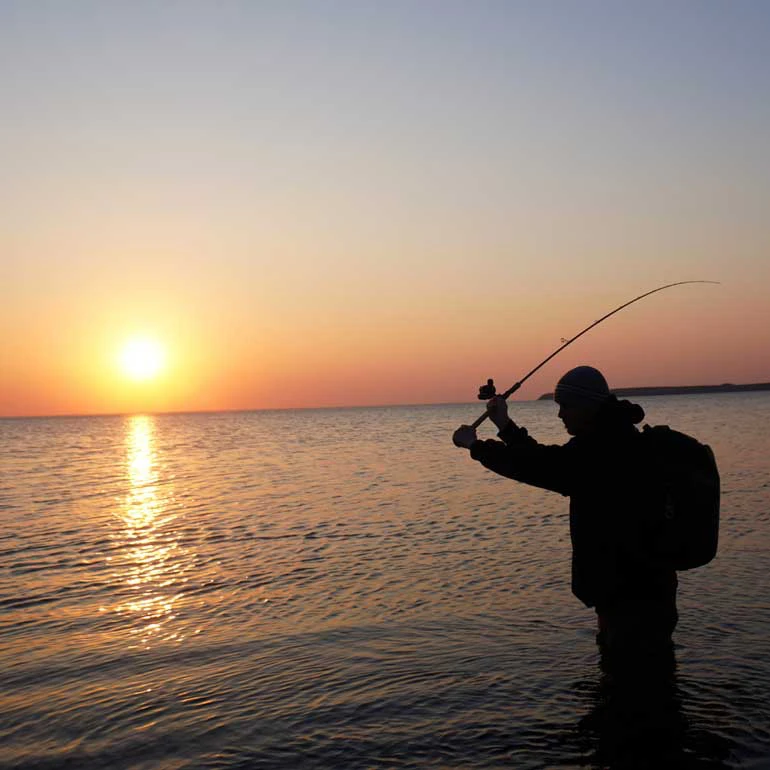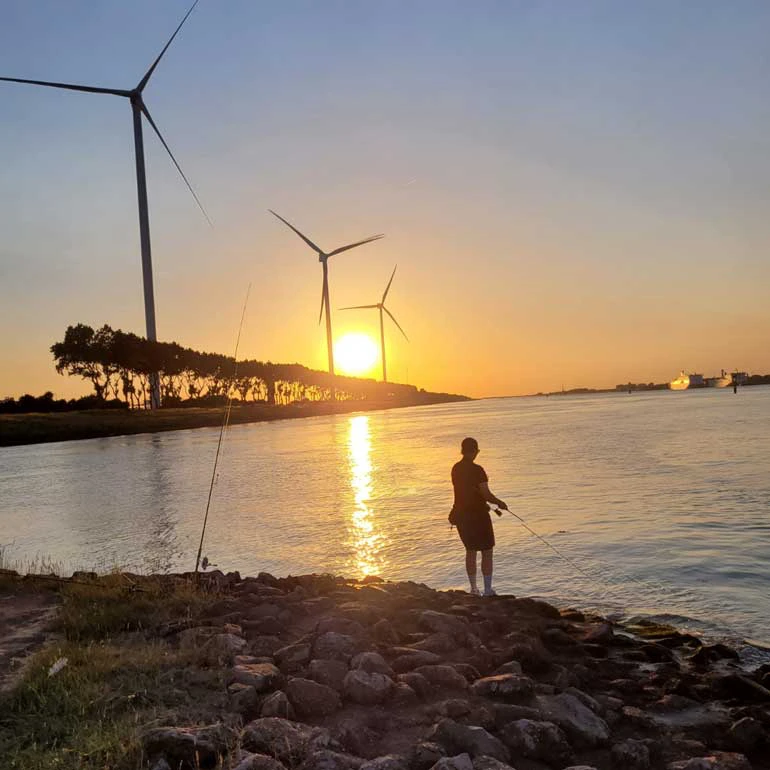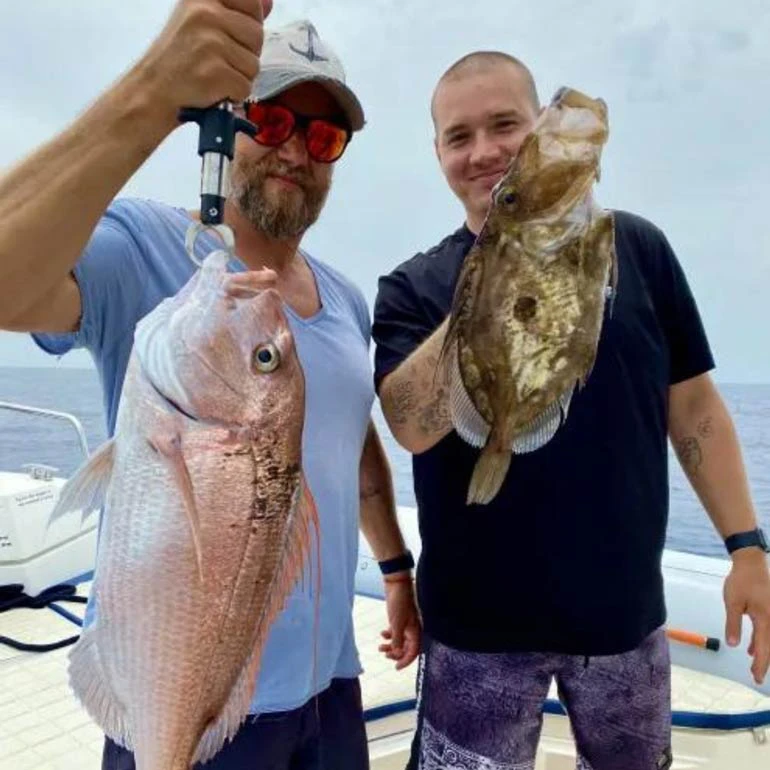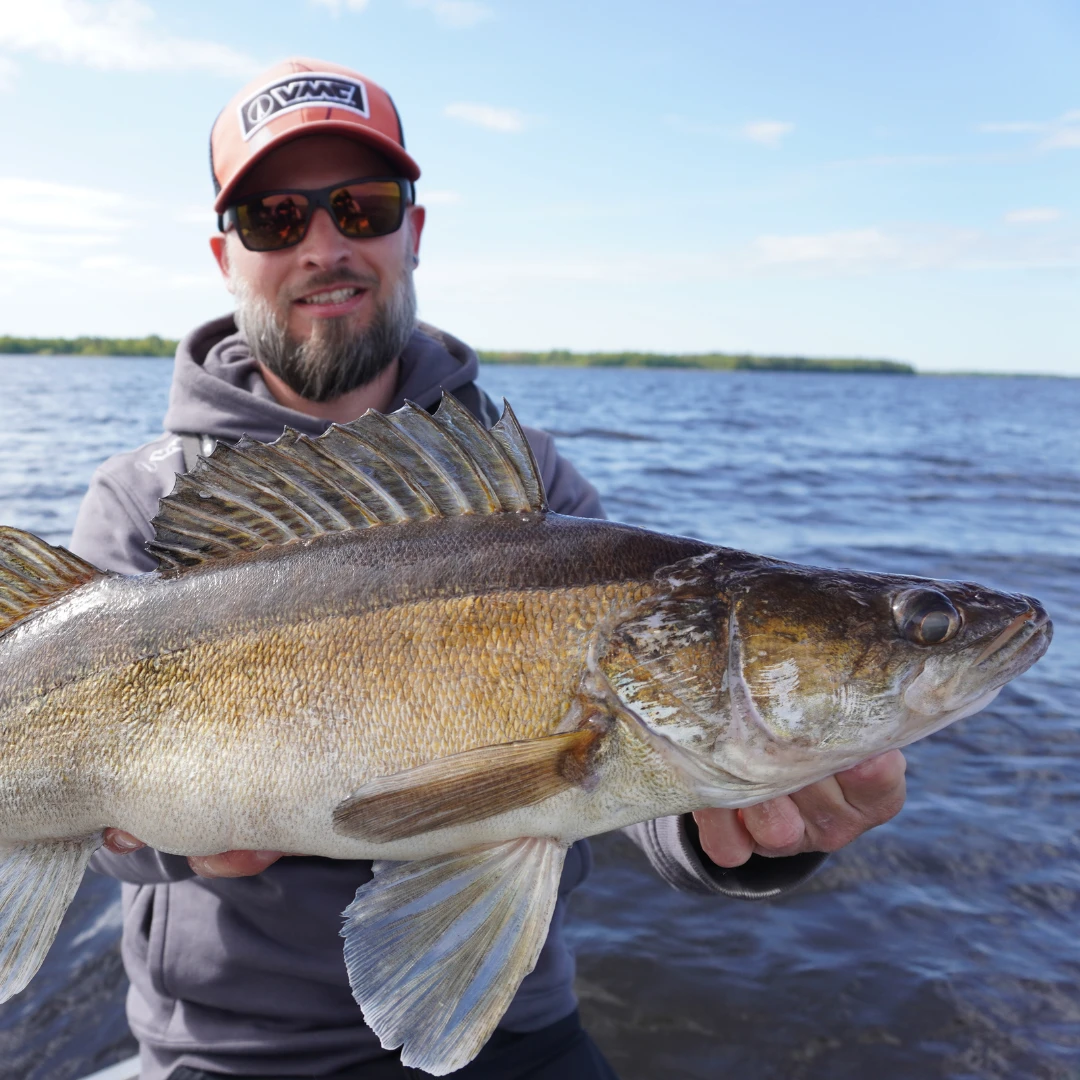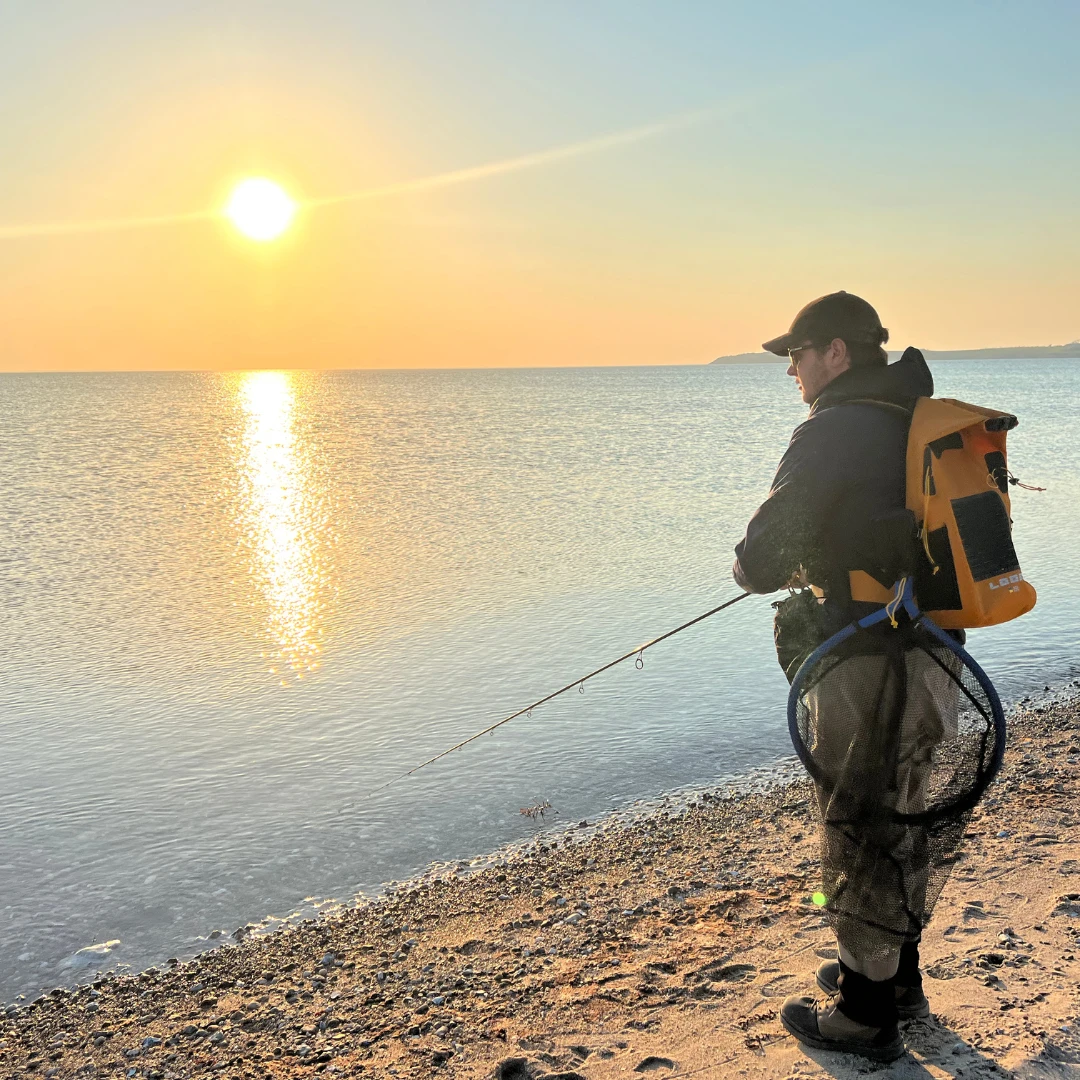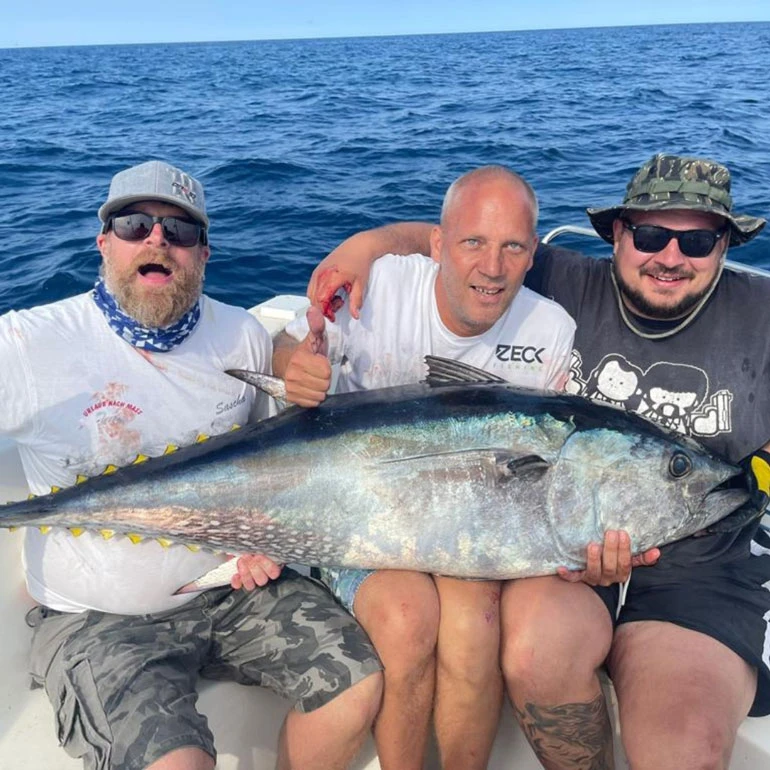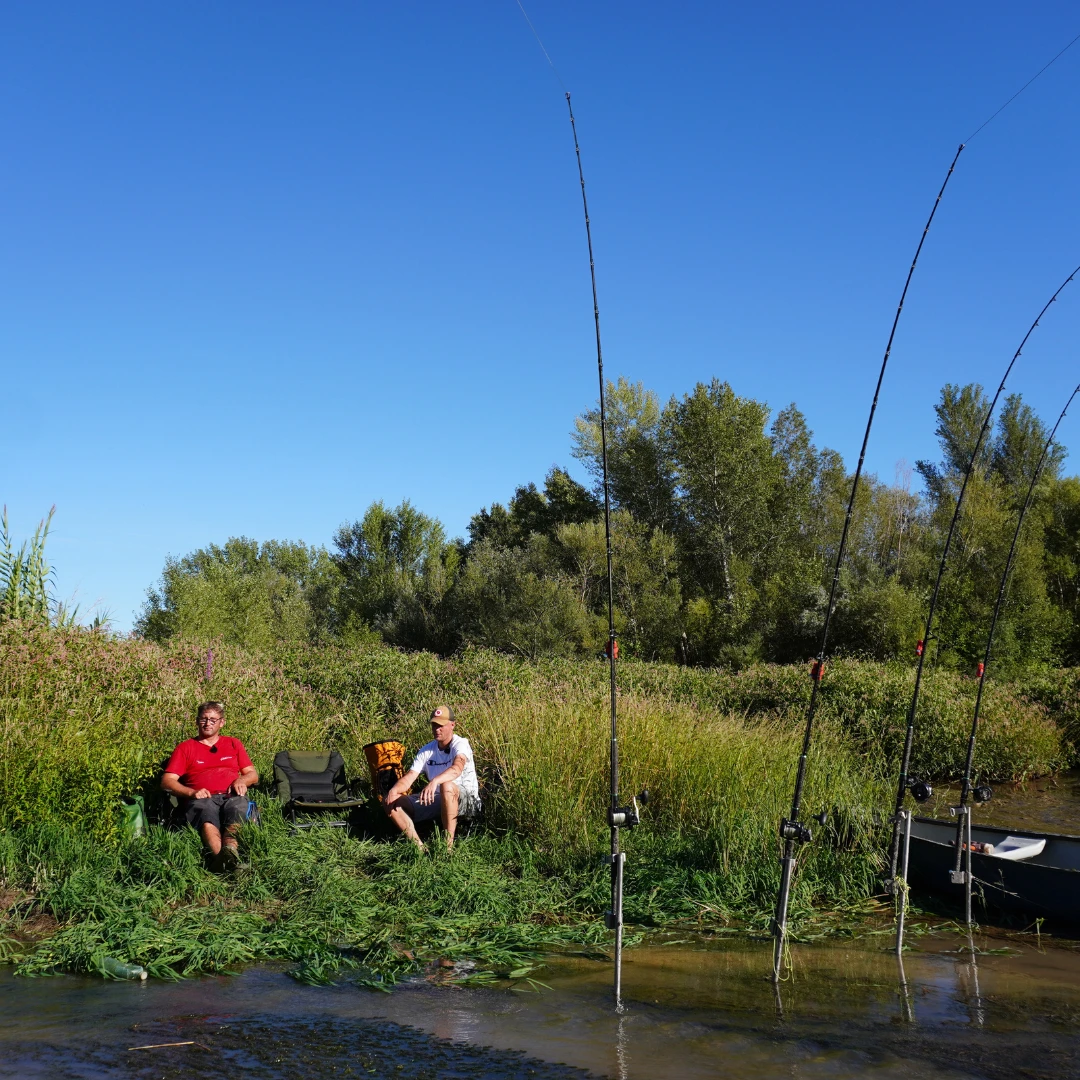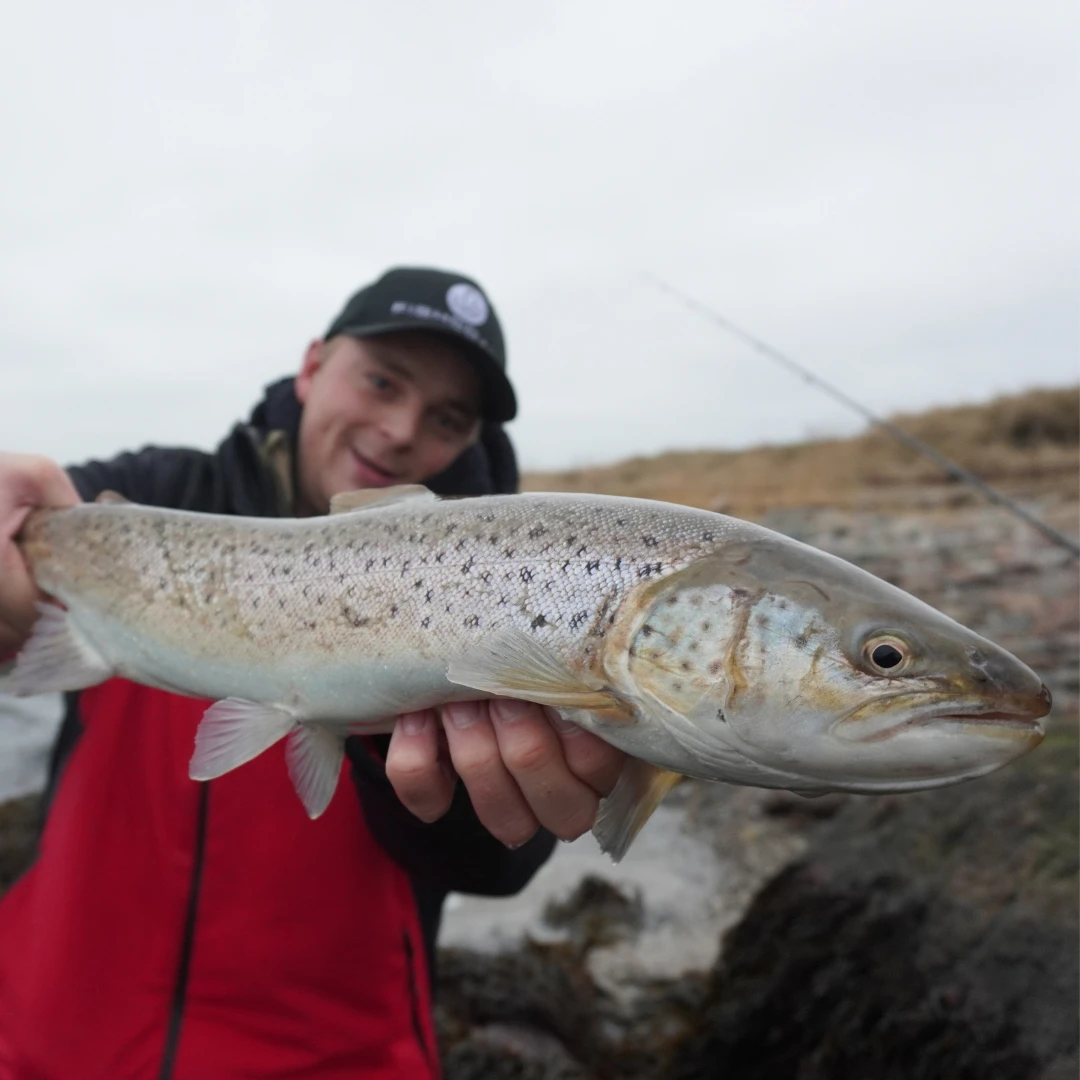
02
Jan
Trout Fishing in Winter
Content: 1. Trout Fishing in Winter: A General Overview 2. Winter Trout Fishing: The Special Features 3. Winter Fishing at Trout Ponds 4. Winter Fishing for Trout in Rivers 5. Winter Trout Fishing: The Most Successful Methods 6. Trout Fishing on the Bottom 7. Trout Fishing with a Float 8. Winter Trout Fishing: Learn from the Pro
Trout Fishing in Winter: A General Overview
Winter is a time when many anglers store their fishing gear and await warmer days. However, for passionate trout anglers, this season presents a unique opportunity to continue their pursuit and experience the fascination of winter fishing. Whether at pond facilities or in wild streams and rivers, winter trout fishing can become an exciting adventure.
The cold winter months are known for trout exhibiting particularly high activity. This is because this fish species prefers cold and oxygen-rich water. While many other fish species become inactive, trout remain active and ready to search for food. This makes winter trout fishing especially enticing, with significantly increased chances of making a catch. A popular alternative to fishing in wild streams and rivers is trout ponds. These specially designed waters offer various advantages for anglers. Trout ponds are typically well-maintained and provide a high number of trout that rely on regular feeding, inevitably leading to increased chances of a successful catch.
Furthermore, trout ponds are often kept ice-free to enable fishing even in winter. Once the ice surfaces reach a safe thickness and are open for fishing, there is even the possibility to try the fascinating activity of ice fishing. The sensation of standing on a frozen surface and angling for trout through a hole in the ice adds a unique atmosphere to winter fishing.
However, fishing in wild streams and rivers also has its allure in winter. The untouched nature, the quiet flow of water, and the silence of the winter landscape create a unique atmosphere. While fishing in natural waters may be more challenging due to lower water temperatures and altered trout behavior, these challenges make the experience even more thrilling.
In this blog article, we will delve into winter trout fishing at pond facilities and in wild streams and rivers. We will share tips and tricks on how to effectively approach active trout in winter and discuss proven baits and techniques.
Winter Trout Fishing: The Special Features
Winter trout fishing has specific characteristics that need to be considered. The low water temperatures and altered metabolism of trout require an adapted approach. The fish are active during this season but move more slowly, requiring patience and endurance. It is crucial to present the bait slowly and enticingly to capture the attention of the trout. Additionally, certain baits like small worms, dough balls, or flies resembling the natural prey of trout are effective. Regularly changing fishing spots and experimenting with different techniques can also lead to success. It is essential to wear warm clothing and be prepared for unpredictable weather conditions. With these tips and a dose of patience, winter trout fishing can be an exciting and successful experience.
Winter Fishing at Trout Ponds
Winter fishing at trout ponds offers various opportunities to successfully catch trout. In this season, fish seek specific locations providing shelter and food. They often stay near underwater structures like weed beds, holding basins, or rocks. These structures offer trout protection from cold and potential predators while serving as hiding spots. Additionally, they prefer areas with deep water, providing a stable temperature and sufficient oxygen. By targeting these preferred locations and presenting baits near them, anglers increase their chances of a successful catch. It is advisable to explore these spots with both active and passive setups. The following sections will examine the most successful methods in winter in more detail.
Winter Fishing for Trout in Rivers
Winter angling for trout in wild streams and rivers is an exciting challenge for any angler. In this season, the behavior of trout changes, requiring specific knowledge for success. The fish retreat to deeper areas of the water to find shelter from the cold and conserve their energy reserves. Preferred locations are often below rapids, in deep pools, or in calmer areas of the river. These spots have slightly higher water temperatures and sufficient oxygen and food.
To find these locations, it is crucial to explore the river carefully. Walking along the shore and looking for depressions, current edges, and other structures can provide clues to potential trout locations. They are often found near obstacles like fallen trees or rocks, providing shelter and cover.
Regarding baits and techniques, various approaches have proven effective. Since trout are less active in winter, fishing slowly and presenting the bait enticingly is sensible. Popular baits include small worm imitations, rubber fish, or flies resembling the natural prey of trout. Ice fishing with nymphs, a specific fly-fishing method, can also be successful in winter. Here, the fly is offered close to the water bottom, where trout often reside.
Winter angling for trout requires patience and endurance. It may take some time to find the right bait and technique to outsmart the elusive fish. Additionally, anglers should be aware that the chances of catching fish in winter are generally lower than in warmer seasons.
As an angler, it is essential to adapt to weather conditions. In winter, there can be significant temperature fluctuations affecting trout behavior. On sunny days, when the water is slightly warmer, trout activity increases. On cold, cloudy days, however, they are more lethargic and harder to persuade.
Winter angling for trout in wild streams and rivers is an exciting and challenging form of fishing. It demands keen observation, patience, and a willingness to adapt to conditions. With the right approach and a bit of luck, impressive catches can be achieved in winter, creating unforgettable experiences in nature.
Winter Trout Fishing: The Most Successful Methods
Choosing the right fishing technique and bait is crucial for winter trout fishing, both in artificial pond facilities and in wild streams and rivers. In pond facilities where trout are often conditioned to feed on pellets or other artificial baits, modern techniques like the Drop-Shot Rig or jigging can be successful. The Drop-Shot Rig involves placing the bait, such as a small rubber fish or natural bait, on the water bottom while suspending the hook a few centimeters above the bottom. This method allows presenting the bait seductively and extremely slowly to attract trout. Jigging, or slow leeching, involves guiding a light tungsten jig head with a rubber fish or nymph. The twitching and hopping of the bait in the water attract and entice trout to bite. Slowly guided spoons are also effective and enable the angler to explore different depths quickly. The bottom-touching setup with floating dough or the float setup with sinking dough or natural baits like worms and maggots can successfully target lethargic fish at the right depth.
In wild streams and rivers, it is often more effective to rely on natural baits. Small worms, maggots, or insect larvae are popular options as they resemble the natural prey of trout. These can be presented using the float or bottom fishing method. In float fishing, the bait is placed in the water using a float and allowed to drift with the current. The bottom fishing method involves presenting the bait at the water bottom. A light bottom rod and a fine setup are used to present the bait slowly and enticingly. Slowly guided spin lures like wobblers, spoons, or rubber fish are also convincing.
Generally, when winter fishing for trout, it is crucial to guide the bait slowly and present it enticingly. Trout are less active during this season, responding to slow movements and natural baits. It is advisable to experiment with different techniques and baits to determine the preferences of trout in the specific environment.
Trout Fishing on the Ground
Bottom fishing in winter for trout is highly successful as it allows presenting the bait precisely and for an extended period. Trout are less active during the cold season, moving slower, making a motionless and unobtrusive bait presentation particularly effective. The setup for bottom fishing for trout in winter is simple. A light bottom rod with a sensitive tip and fine line is used. Monofilament or braided line with a strength of 0.20 to 0.25 mm serves as the main line. A swivel at the end of the main line allows attaching the leader, which should be about 50 to 80 cm long, and the installation of a bottom tester, which is also available in a running variant. A finer monofilament line with a strength of 0.16 to 0.20 mm serves as the leader line.
A hook size 6 to 10, depending on local fishing regulations, is tied to the end of the leader. Small worms, maggots, insect larvae, or dough balls are suitable baits for bottom fishing in winter for trout. These natural baits imitate the prey of trout and pique their interest. It is important to offer the bait slowly and close to the bottom, as trout often stay there. Patience and a calm approach are crucial for bottom fishing in winter for trout. Regularly changing the fishing spot can help explore different locations and depths, ultimately leading to success.
Trout Fishing with a Float
Winter trout fishing with the float setup is a versatile method to successfully angle for the elusive fish. In this technique, the bait is placed in the water using a float. Typically, the baits are presented near the bottom of the water, as trout often reside there during the cold season. It is crucial to guide the bait slowly and enticingly to capture the interest of the trout.
However, on sunny winter days, trout may move to shallower areas and stay in the upper water column. In such cases, it may be beneficial to offer the float setup higher and present the bait in the upper water layer. This requires some flexibility as trout can exhibit different behaviors depending on the weather and time of day.
The float setup allows the angler to easily adjust the depth of the bait and respond to the needs of the trout. By adding or removing weights on the setup, the float can be balanced accordingly. This makes it possible to present the bait at different depths and offer the trout exactly where they are at that moment.
Winter trout fishing with the float setup thus offers high flexibility and adaptability. It allows the angler to fish both near the bottom and in the upper water column, depending on the behaviors of the trout on a particular day. With the right presentation of the bait and some patience, impressive catches can be achieved.
Winter Trout Fishing: Learn from the Pro
Winter trout fishing in wild streams and pond facilities can be an exciting challenge for beginners. It requires a certain level of experience and knowledge about the waters and trout behaviors. For this reason, it is advisable for beginners to seek guidance from an experienced guide who can share all the tips and tricks and provide essential assistance. A guide can help find the best fishing spots, select the right equipment, and use optimal baits and techniques. With the support of a guide, winter trout fishing becomes a successful and educational experience.
